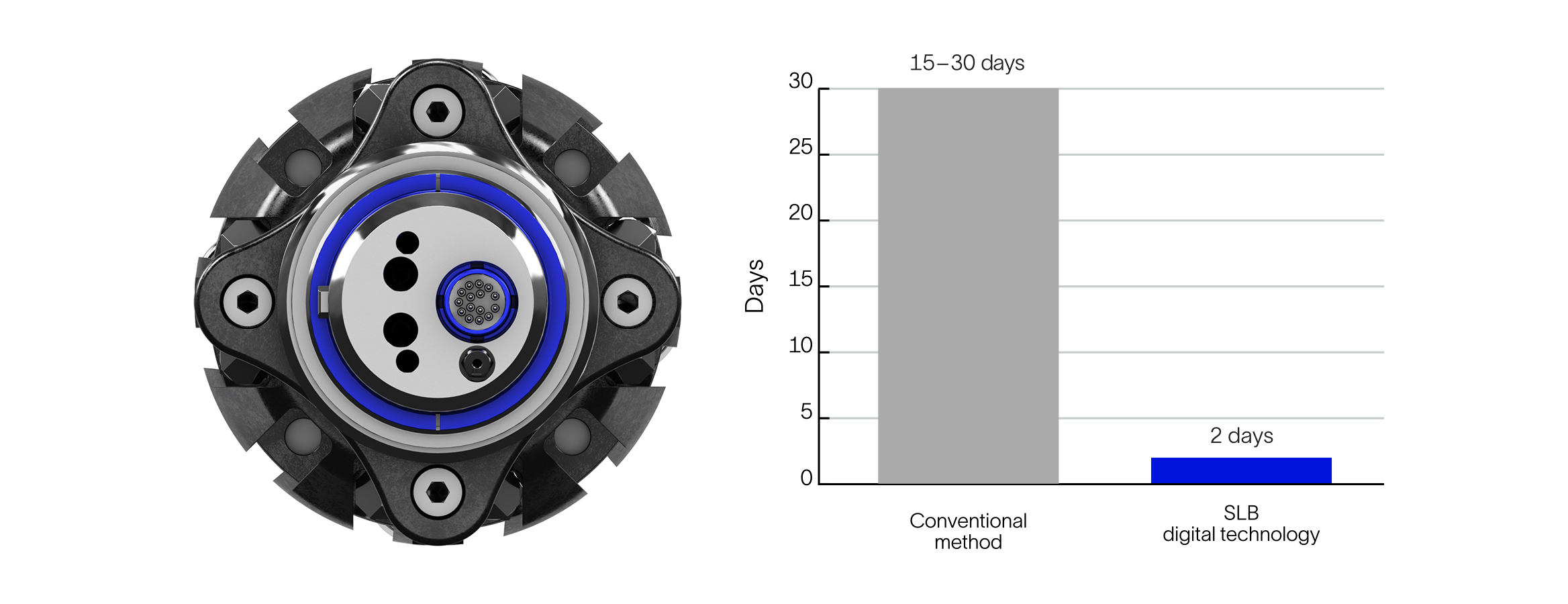MDT
Modular formation dynamics tester
Accurately measure real-time reservoir pressure and permeability and collect high-quality, representative fluid samples.
An operator in Southeast Asia spent 2 years planning for an exploration campaign in a shallow clastic environment. The first well was a successful discovery confirming viable oil and gas from thin-bedded and stacked reservoirs with some carbonate layers.
The second target well was located 12 km away, while the nearest offset wells were 15 km away and more than 10 years old. The original acquisition wireline data were either limited or lost, and the operator had to rely on 3D seismic and basic petrophysical interpretations to make assumptions about reservoir potential. Moreover, a major fault was identified near the target well, and the operator was concerned about the well deliverability across the fault. This had to be unlocked quickly to make informed decisions within the critical time frame.
With so little information surrounding the target well, the operator needed a solution that would deliver actionable insights with minimal turnaround time. Interpretation and modeling workflows that use traditional logging techniques and software platforms cannot solve for thin-bed characteristics and are not designed to provide quick answers. The input parameters are low resolution, and the steps in the workflow are manual and time consuming.
The use of advanced wireline logging technology makes it easier to accurately characterize the reservoir, find all the hydrocarbons, and predict potential, but the initial data acquired may not be interpreted in time to provide information for subsequent runs. This results in high uncertainty when making critical, real-time business decisions on issues such as drilling a sidetrack, planning dual completions, or validating the depth of formation pressure or fluid sampling stations.
Typical data interpretation workflows require significant domain expertise and can use up a lot of time and resources. Several weeks of work with high-end 3D models and simulations are required to deliver comprehensive results.
A hybrid approach—combining timely expert petrophysical log interpretation with expertise in creating 3D digital near-wellbore models—gave the operator improved hydrocarbon volumes and new insights into laminated pay zones that would otherwise have been overlooked. The approach also helped pinpoint nearby sealing faults that affected lateral connectivity across the reservoir, as well as nonextensive shale layers that had no effect on connectivity.
This AI-assisted information was derived within 48 hours of the data being acquired. As a result, decisions were made in days rather than the 2 to 4 weeks normally required. Quicker and better-informed answers helped the operator to deliver completion designs much faster and with higher confidence, saving considerable rig time and accelerating time to first oil.
The right decisions made with the right information at the right time convinced the operator to target a third exploration well using other digital solutions provided by SLB, particularly related to wellbore dynamics (dynamic analysis of possible blowout rates and kill rates) and well integrity (via real-time interpretation).
Digitally enabled technologies and workflows, such as those mentioned in this case study, can be applied across various reservoir evaluation applications—including infrastructure-led exploration—to accelerate field development.
